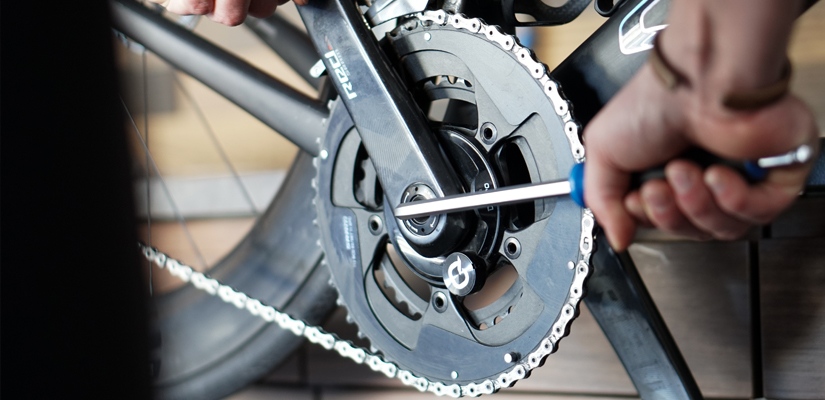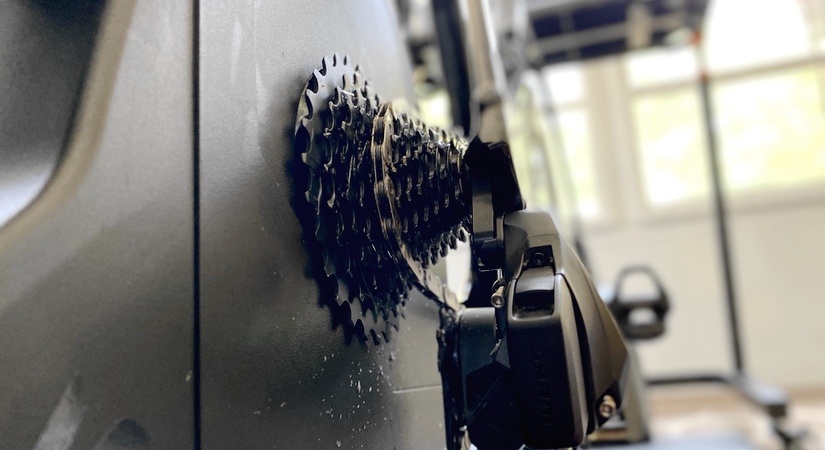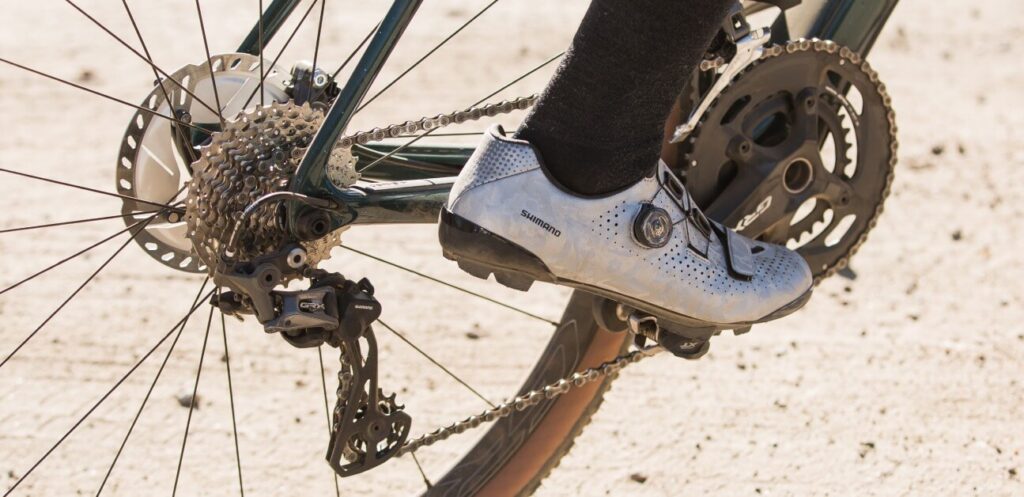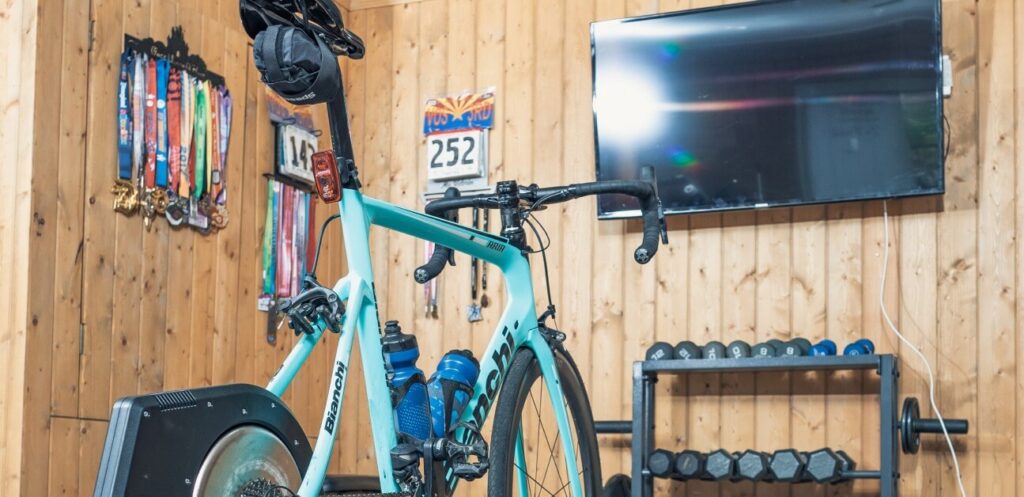Bike Maintenance Checklist for Training

A clean bike is a fast bike, even when it’s on the trainer. Training is hard on your body and equipment, whether you’re riding indoors or out. This bike maintenance checklist for training can make sure your bike is ready to work as hard as you do.
For more information on bike maintenance and training check out Ask a Cycling Coach Ep 253.
Bike Maintenance Checklist
Daily Bike Maintenance
Wipe down your frame.
Check tires and inflate as needed.
Weekly Bike Maintenance
Check drivetrain. Clean and lube as needed.
Wash your bike if needed.
Dust off the trainer.
Check to make sure your bike is secured to the trainer.
Monthly Bike Maintenance
Check your handlebar tape and replace it as needed.
Apply a thin coat of grease or anti-seize compound to stem bolt heads.
Check the chain, chainrings, and cassette for wear.
Bike Maintenance Tips For Training
Riding on the trainer can be just as tough as an outside ride on your equipment. In general, corrosion from sweat is the biggest indoor training bike maintenance problem. The good news is that corrosion takes time, and staying on top of bike maintenance can help you avoid costly repairs. The best advice is to regularly clean and check parts for signs of corrosion or wear. Here are some of the parts to keep an eye on.
Cockpit
Your handlebars and stem take the brunt of your hard work on the trainer. Because there is significantly less airflow over your body when riding on the trainer, sweat is less likely to evaporate. Once enough sweat accumulates, it will start to drip onto the bike. For many, this means lots of sweat landing on the handlebars and stem. Additionally, the further you lean into an aero position, the easier it becomes for sweat to get onto the cockpit.
One of the best bike maintenance tips for indoor training is to get a couple of good fans and drape a towel over the handlebars. Even during easy endurance rides, your body produces a massive amount of heat, resulting in tons of sweat. Plenty of cooling will help reduce bike maintenance caused by sweat. While any fan will be better than none, we recommend getting a pivoting blower fan like this one. These types of fans provide a focused beam of fast-moving air.

The first place corrosion usually shows is on the top cap bolt or the bolts that secure the stem to the steerer tube. Another location to check is your stem’s faceplate bolts. You can wipe on a very light coat of bike-specific grease or anti-seize compound to help, but avoid putting grease on any threads that have a thread locking compound. As with any bolt, make sure to torque it to the manufacturer’s specifications.
Whether you’re training indoors or outside, a great bike maintenance tip is to regularly check and wash your handlebar tape. The tape soaks up sweat and will leave behind salt crystals. Over time, the salt will cake underneath the tape and can rust shifter clamps or even corrode aluminum handlebars. A regular bike wash can go a long way in helping. Even better, regularly replace your bar tape.
Drivetrain
It’s easy to forget about your drivetrain riding indoors, especially if you use headphones when riding the trainer. While your chain won’t get as dirty from riding outside, it will collect dust, and the lube will eventually dry up. If you’re training a lot, it’s a good idea to add cleaning your drivetrain to your weekly bike maintenance routine—especially if you’re riding outside. Clean and properly lubed chains will reduce the amount of wear throughout the drivetrain.
Also, check for chain wear with a good tool. As the pins inside the chain wear down, the rollers have more room to move—often called chain stretch. Running a worn-out chain will cause premature wear of even more expensive components like the chainrings and cassette.
The best way to maintain your drivetrain is to clean it with a degreaser, rinse, and then let it dry. Once it’s completely dry, apply less lube than you think. One drop per roller is plenty. Backpedal for a few turns, then take a rag and wipe off the excess. Most lubes use a carrier that evaporates and leaves the lube where you want it. If that’s the case, just make sure to let that dry before you ride. Riding with too much lube or not letting it dry, and you may end up with lube on the floor. This is also true for riding outdoors as the lubricant will attract more dirt.

The right lube for you depends on the conditions of where you’re riding, but a dry lube is an excellent choice for indoor training. You can go a step further and wax your chain. Waxing your chain takes a bit of prep work on the front end. But, once that’s out of the way, the bike maintenance is quick. Additionally, you don’t have to worry about greasy hands, but a freshly waxed chain will leave flakes on the floor and can be vacuumed up. We like to use Molten Speed Wax.
Tires
Air naturally leaks through the porous surface of tubes and tires. It’s a good idea to add checking the pressure to your daily bike maintenance routine. Tire pressure is more important when riding outside, so check it before every ride. Indoors, you won’t need to check it every day, but if it feels soft, go ahead and put some air in your tires. This is especially true if you run tubeless.
Frame
In general, the paint on your frame does an excellent job of protection. However, any openings or places where parts attach provide an opportunity for sweat to get in. The upper headset cup and bottom bracket can collect both sweat and drink mix. Wipe the frame after your workout will help keep the build-up to a minimum.
It’s a good idea to regularly wash your bike with a bike-specific wash. If you don’t want to wash, you can always use a bike polish and microfiber cloth to make things nice and shiny.
Maintenance Tips for Indoor Trainers
There isn’t much you need to do for your indoor trainer when it comes to maintenance. The biggest thing you’ll want to do is to check to make sure your bike is securely attached by checking the quick-release or thru-axle. Additionally, you can wipe it with a cloth to keep things clean. If you have a smart trainer, don’t forget to calibrate to ensure you have an accurate measurement from the power meter.
You can calibrate your trainer within the TrainerRoad app. Start your workout and ride for five to ten minutes. Then navigate to the Devices tab in the app and click on Calibrate. For more information on how to calibrate your trainer, check our support article.
By spending a little bit of time on bike maintenance, you can save both time and money. It’s easy to forget about the little things when you leave a bike on the trainer, but these bike maintenance tips will help keep your equipment in top form.
For more cycling training knowledge, listen to Ask a Cycling Coach — the only podcast dedicated to making you a faster cyclist. New episodes are released weekly.

